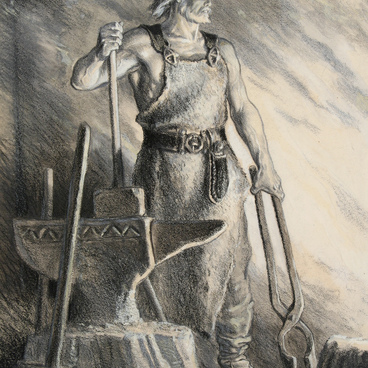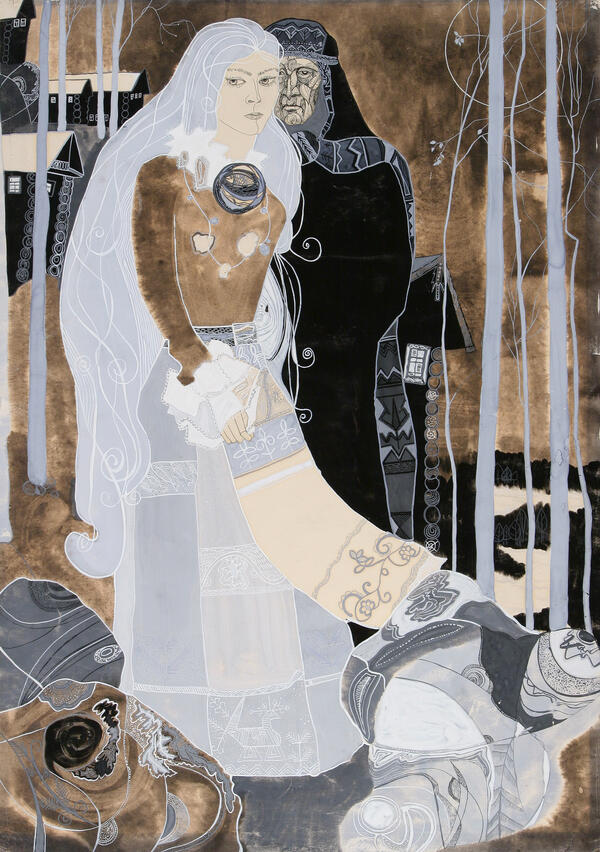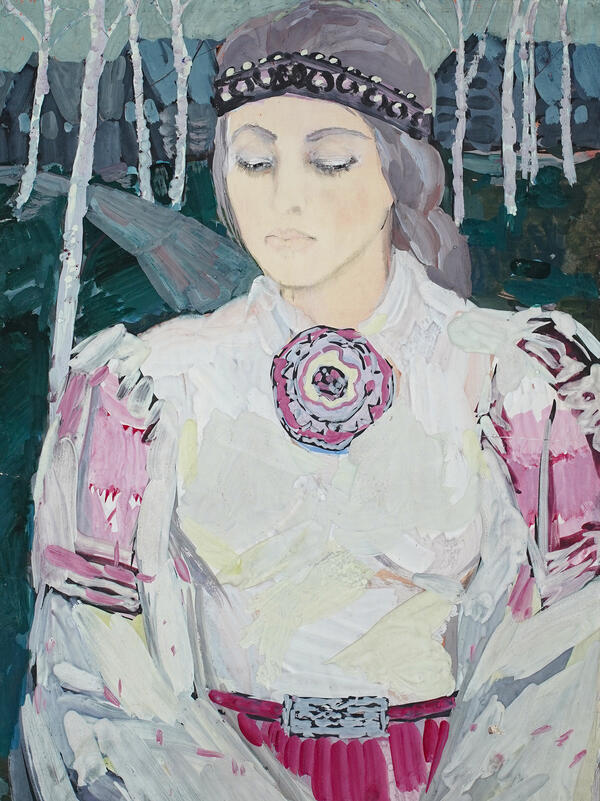Tamara Grigoryevna Yufa was a prominent graphic artist, painter, book illustrator, and set designer. She was an Honored Artist of the Russian Federation and a People’s Artist of the Karelian Autonomous Soviet Socialist Republic. Tamara Yufa was awarded the State Prize of the Karelian ASSR and became an honorary citizen of the city of Petrozavodsk. She was born on March 2, 1937, in the village of Kolodeznaya in the Lipetsk region. In 1960, the artist moved to live and work in Karelia.
People often sang runes accompanying themselves by playing the kantele, a Finnish and Karelian plucked string instrument. Traditionally, its body was carved from one piece of wood, usually alder. The soundboard was attached to the body with either birch bark or nails, and the strings were made from horsehair.
The history of the kantele’s creation and the magic of its sound are described in the epic poem “Kalevala”. Its creator, Wainamoinen, touches the strings and all living things, even spirits, spirits of air, land, and sea, come to listen. The enchanting sounds move everyone, spreading throughout the land.
In the artwork on display, the Karelian artist Tamara Yufa has managed to capture the sound of the kantele with surprising imagination. The musician plucks the strings, and the sounds of the instrument disperse first through water, then through air as waves of magic melody. The most beautiful sounds blossom like flowers on mossy, ancient rocks. This artistic technique is characteristic of Yufa’s work, reflecting her deep understanding of folklore, in which humans are children of nature, living in harmony with its forces and spirits.
The poem “Kalevala” has had a significant impact on the evolution of the Karelian and Finnish languages, literatures, cultures, and identities of these two peoples. Themes, motifs, and imagery from the “Kalevala” continue to inspire many individuals. People still sing the runes from the “Kalevala” to the accompaniment of the kantele.
Tamara Yufa’s composition is meticulously
thought-out. Her style is distinctly clear; the color scheme is refined and
characterized by density and expressiveness. Decorative elements are used with
a sense of proportion. At the same time, the very important lyrical and
dramatic principle has been weakened.







